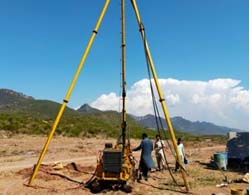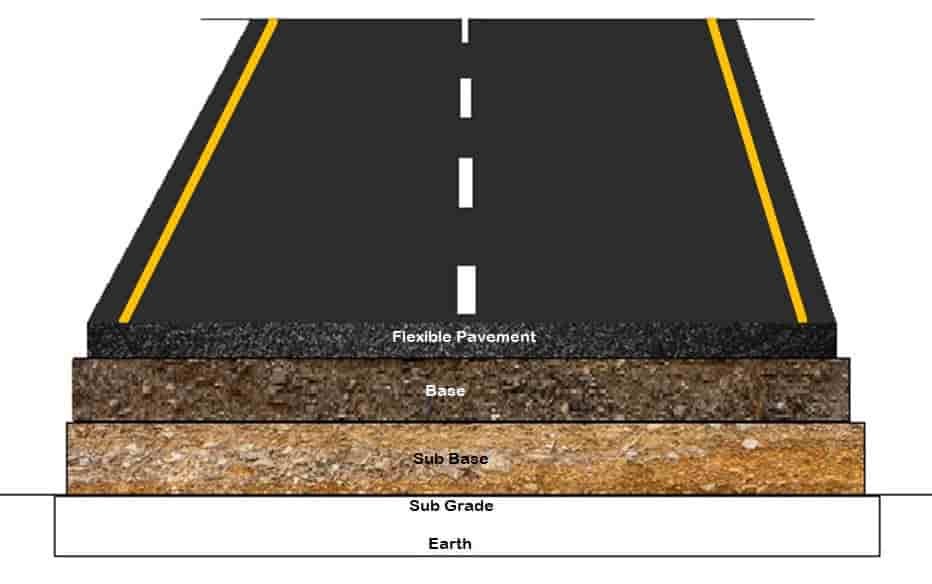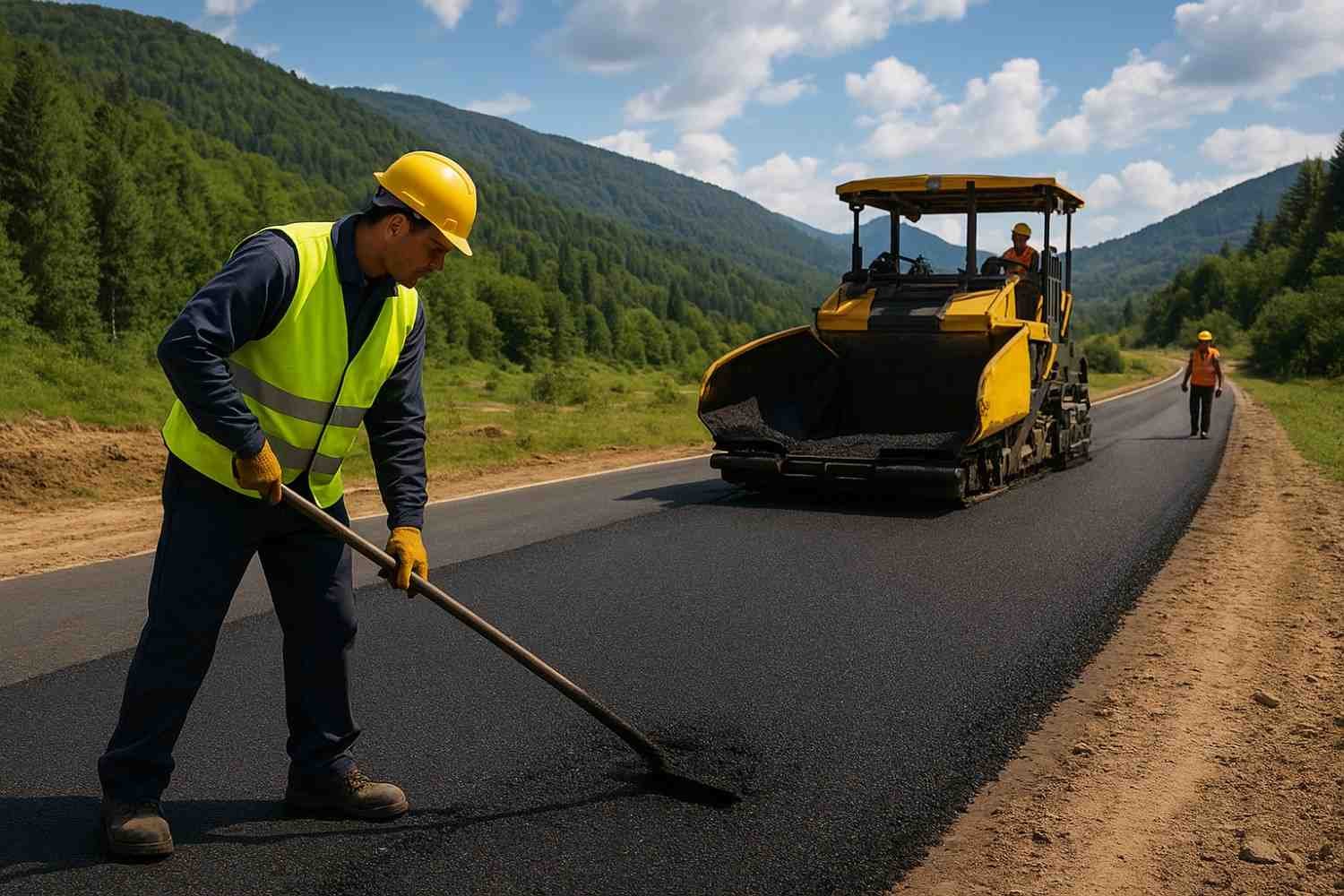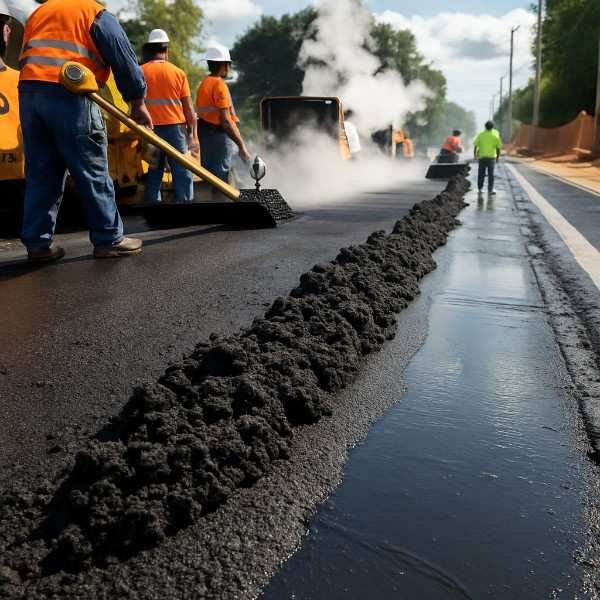Table of Contents
Road Construction Process
Road construction is the process of building or improving roads, highways, streets, and other transportation infrastructure. The objective of road construction is to create safe, durable, and efficient roadways to facilitate the movement of people and goods through vehicles. It involves various stages, including planning, designing, site preparation, earthwork, pavement construction, drainage installation, structural features, safety features, environmental considerations, quality control, and maintenance. Road construction is typically carried out in the following layers:
- Sub Grade (Natural Earth layer)
- Sub Base
- Base Course
- Surface Layer (Flexible or Rigid Payment)
Planning and Designing of Roads Construction
Before starting construction work, engineers and planners carefully examine the area where the road will be built. They consider factors like traffic volume, soil conditions, topography, and environmental impact. This information is used to create a detailed design that specifies the road's alignment, width, and materials.

Surveying and Mapping the Area
Surveying and mapping for road construction is the process of defining and measuring the precise positions, distances, and elevations of points, features, and natural or manufactured structures on the construction area.
- Preliminary Survey: This phase gathers existing data about the area, such as topographic maps, satellite images, and geological surveys, to finalize the terrain and plan the road route.
- Field Surveying: Surveyors visit the site to collect detailed measurements using instruments like total stations and GPS receivers to determine key points along the proposed road alignment.
- Topographic Mapping: Maps showing natural and artificial features are created, including hills, valleys, rivers, buildings, and trees, essential for designing the road to fit the landscape.
- Alignment Surveys: Finalizes the road alignment, laying out horizontal and vertical curves necessary for safe and efficient travel.
- Right-of-Way Determination: Identifies land boundaries needed for road construction, ensuring compliance with legal and environmental constraints.
- Construction Staking: Marks proposed road features on the ground, such as centerlines, edges, intersections, and structures, to guide construction crews.
- As-Built Surveys: Conducted after construction to verify that the road was built according to design plans and specifications.

Soil Testing or Investigation
Soil testing ensures the stability, durability, and performance of road infrastructure by analyzing soil properties.
- Soil Sampling: Collects samples across the construction site to reflect soil variability.
- Laboratory Testing: Tests include particle size distribution, Atterberg limits, compaction characteristics, and California Bearing Ratio (CBR) to assess soil strength and suitability for road foundations.
- Engineering Analysis: Engineers analyze test results to design appropriate pavement structures and soil stabilization methods.
- Recommendations: Based on test results, engineers provide guidelines for pavement design parameters and construction techniques.

Designing the Road Structure
The construction of road infrastructure is an essential component of the planning of modern cities and civil engineering, influencing daily traffic and its safety and commencement. An effective road design means that there is free-flowing traffic, few or no incidences of accidents, and the least possible time on the road. The first step is to define the need for the road, whether it is for cities, farms, or fast-moving traffic.
Environmental issues, traffic intensity, and regulation of the project area all matter in these structures’ construction. They also have to select the right materials, whether flexible like asphalt or rigid like concrete, depending on the choice of the contractor or client.
The horizontal and vertical alignments of the road are well-defined in such a manner that visibility and safety are considered. Further, drainage facilities are provided and are meant to allow free drainage of water so that water can never accumulate on the road surface since this is dangerous and causes accidents. Such features as smart roads and sustainable materials are implemented as the pace of industry development focuses on the environment.
Therefore, the vision is to see a good road structure network that can support today’s traffic needs and, at the same time, prepare for the future needs of the country. This includes careful conception, superior tools, and ongoing assurance to guarantee that they will still be functional and secure in the future.






